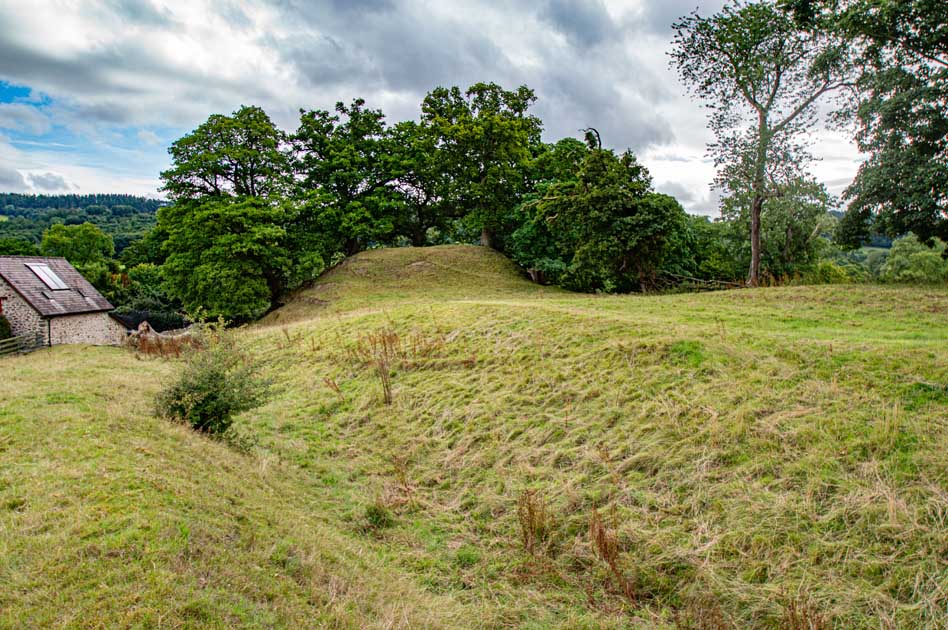Mathrafal Castle

Mathrafal Castle Details
Mathrafal Castle, site of llys and earthworks of large motte and bailey destroyed C13
- Closest To: Meifod, Pontrobert
- Access: Occasional Access
- Grid Reference: SJ13171079
Mathrafal Castle is the earthwork remains of a motte and bailey castle, built on the west bank of the Afon Banwy. The motte is surrounded by the much denuded remains of a ditch (which was revetted in stone), and the bailey is quadrangular, provided with an upcast bank on the inside, and a lesser bank to the outside. The eastern (river) side of the bailey earthworks have been mostly ploughed out. Additional earthworks within the bailey are largely unintelligible, and the river has eroded some of the eastern parts of the structure. The castle is within a field used for agriculture, so permission should be sought before attempting to access the site, and care taken with any livestock. The mound and enclosure are not contemporary; the motte was originally associated with an oval bailey, and this phase of occupation is dated to the early 13th century. The old ditch was filled in between 1310 and 1430, when the quadrangular enclosure was created.
A tradition dating to the latter 13th century makes Mathrafal the ancestral seat of the native Welsh ruling house of Powys, but this was not, in fact, the case. The castle at Mathrafal was most likely to have been founded by Madog ap Maredudd, the last prince of a united Powys, in 1156. In 1160, Madog died, leaving his lands to be partitioned. The warfare that followed led to his nephew Owain Cyfeiliog taking and destroying Mathrafal, which was held by Owain Fychan, a younger son of Madog. Matrhrafal may have been brought back into use, but a poem about Gruffudd ap Cynan ap Owain Gwynedd records him burning Mathrafal and attacking Welshpool, perhaps part of a joint venture with the English in attacking Gwenwynwyn, son of Owain Cyfeiliog. The castle was then held for the king of England, probably being rebuilt at his instruction for Robert de Vieuxpont, although it was then destroyed by Llywelyn ab Iorwerth of Gwynedd in 1211. At this point, Mathrafal seems to have fallen out of use. However, when the power of Llywelyn ap Gruffudd of Gwynedd was at its height, his court bards refer to him as the “crowned one of Mathrafal”, emphasising his supremacy over the southern portion of Powys, and dominance over the independently minded Gruffudd ap Gwenwynwyn. It is conceivable that at this time, Llywelyn ap Gruffudd repaired the castle, linked with Madog in memory, and was the source for the story that Mathrafal was the ancient seat of the dynasty. After the conquest of Wales by Edward I, Mathrafal was brought back into the ownership of Owain ap Gruffudd ap Gwenwynwyn, both in 1278 and 1291. Owain died in 1293, succeeded by his son Gruffudd, but when Gruffudd died in 1309 he was firmly considered a Marcher baron, taking the style de la Pole like his father. His estates passed to his sister Hawise and her husband John de Charlton, who was sometimes referred to as Lord of Powys, the name given to his castle near Welshpool. With this generation, the link to Mathrafal became less important, and it is likely that over time the place was just allowed to decline, forming a baronial centre and manor, and eventually a farm.
Become a supporter of my work to access a more detailed history